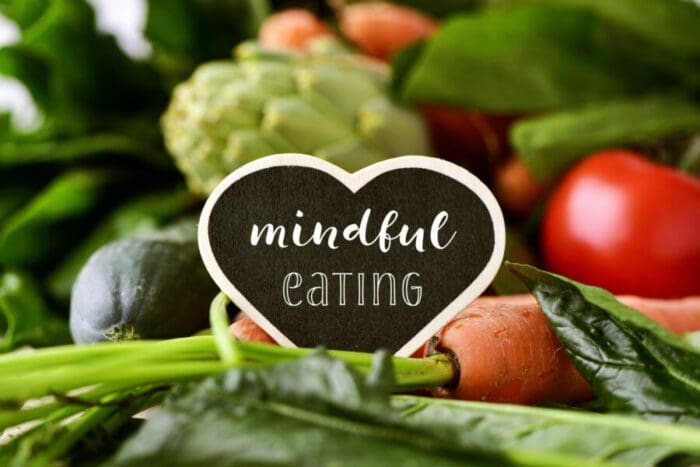
Mindful Eating
This article was written by Melanie Nissen & Alexandra Tobaben: first-year graduate students in Cox College’s Nutrition Diagnostics Masters program and Dietetic Internship.
What is mindful eating?
“Mindfulness” is being intentional when thinking and acting, especially when it comes to daily practices such as eating, sleeping, working, etc. Specifically, mindful eating taps into a lack of judgment and more of a focus/presence when it comes to consuming meals.
What does mindful eating look like?
There are several different ways we can practice mindful eating. One example could be creating an environment that is judgment free by becoming aware and setting aside past experiences with food. All preconceived expectations for an outcome of eating certain foods should be eliminated (e.g., weight loss) to allow for a greater appreciation of each meal. Another way of showing mindfulness is to accept what emotions a food may bring, whether positive or negative. Incorporating all five senses allows the food to be experienced with an open mind and acknowledgment of feelings and tendencies towards food. Finally, new experiences are created by resolving any resentment toward certain foods.
The benefits of mindful eating
Mindful eating benefits lives by providing more structure. For instance, practicing self-affirmation can control impulsive food decisions and improve self-control. Examples of self-affirmation could include: Today, I am eating for nourishment; Each bite is providing me energy. Research shows that practicing mindful eating strategies can correct irregular eating schedules. Mindfulness helps people respond to their hunger cues appropriately rather than feeling restricted or forced to eat. Lastly, another benefit is improved concentration to get through the day and improved sensual awareness. It is important to note that this task takes time to develop healthy habits.
How to tune into our body signals
We can learn to be in sync with our bodies using several methods. One method is rating hunger before and during meals which can help appreciate the moment and differentiate between satisfaction or the need to continue eating. Another method is paying close attention to sensual awareness during meal times. Notice how the food tastes. What does the texture feel like in your hand? What does it feel like in your mouth? How does it smell? It also helps if the food is visually appealing. Finally, eating slowly throughout meals allows time for the body to recognize its needs. In this case, the pressure to clean a plate can be avoided when the drive to eat is fulfilled. An additional tip would be to keep fresh fruits and vegetables where they can be seen; this helps to be more conscious when snacking/grazing.
Where do I start?
Making conscious food choices and positive experiences by considering how our bodies feel creates a healthy relationship with food by allowing more control and a stress-free mealtime experience. For practical application, a suggested starting point is to use the five senses while eating and take a moment to evaluate hunger status throughout the meal. Eat slowly in the beginning and determine which strategy described above works best for your goals. Over time you’ll begin to understand your hunger tendencies a little more each day.
References
Churchill, S., Jessop, D. C., Green, R., Harris, P. R. (2018). Self-affirmation improves self-control over snacking among participants low in eating self-efficacy. Appetite, 123(1), 264-268. https://www.google.com/url?sa=t&rct=j&q=&esrc=s&source=web&cd=&ved=2ahUKEwjA3eu7qZb2AhVCLn0KHSxuADYQFnoECA4QAQ&url=http%3A%2F%2Feprints.chi.ac.uk%2Fid%2Feprint%2F3227%2F1%2FAppetite_Accepted_2017.pdf&usg=AOvVaw26Yx6mWHmuTHq3tHRdBVn6
Denny, K., Loth, K., Eisenberg, M. E., Neumark-Sztainer, D. (2013). Intuitive eating in young adults. Who is doing it, and how is it related to disordered eating behaviors? Appetite, 60(1), 13-19. https://doi.org/10.1016/j.appet.2012.09.029
Nelson, J. B. (2017, August). Mindful eating: The art of presence while you eat. Diabetes spectrum. American Diabetes Association, 30(3): 171–174. https://www.ncbi.nlm.nih.gov/pmc/articles/PMC5556586/
Pennmedicine.org. (2020). Are you really hungry? How to your understand hunger cues. https://www.pennmedicine.org/updates/blogs/health-and-wellness/2020/april/how-to-understand-hunger-cues
